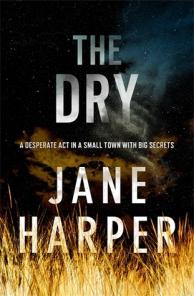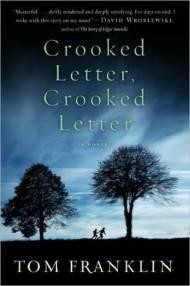I read these two books nearly back to back, and their plots and characters were amazingly similar, though I had no idea when I chose them. I love a totally random reading coincidence. Here’s a comparison of the two novels.
The story: both The Dry and Crooked Letter, Crooked Letter are mystery/thrillers about an unsolved murder, a false accusation, and a teenage friendship that is forever damaged. In both books, a main character returns to the scene to figure out who committed a modern-day crime. In both books, a small town must come to grips with the old crime in order to solve the new one.
In Crooked Letter, Crooked Letter by Tom Franklin, Larry is a man who’s been living on the edge of town in Mississippi for years, running a garage that no one comes to. He was accused of the disappearance of a girl as a teenager, after they went on a date and she never came home. There wasn’t evidence to convict, but the town’s condemned him for it ever since. Now, another girl has disappeared and Tom is found shot in his home, barely alive. His childhood friend Silas is brought in to solve the case.

There are a ton of similarities between these books. In both, the victims are rebellious teenage girls in abusive families. In both books, teenage boys are accused of murder with minimal evidence, and one friend leaves town and the other stays. Both deal with teenage rivalries and jealousies over girls and popularity. Both books are, at their heart, about the disintegration of a teenage friendship.
Major differences? In Crooked Letter, the friend accused of murder stays where he is, facing the vilification of the town, while the other friend leaves and comes back. In The Dry, it’s the reverse. In Crooked Letter, the accused friend is both victim and suspect, while in The Dry the non-accused friend is the victim and suspect. So even the differences are quite minor. Really the major difference is that these books take place on opposite sides of the world.

Both books tell an interesting murder story, but the characters, issues, and writing are much richer in Crooked Letter, Crooked Letter (the title refers to how children in Mississippi learn to spell the state’s name). I particularly found the friendship interesting in Crooked Letter, given its push and pull nature – both boys have reason to hate each other and neither is entirely an admirable character. They betray each other again and again. I also thought the resolution of both crimes felt more believable then in The Dry. But then, The Dry is more of a traditional thriller, while Crooked Letter is a more literary novel where murder is only one aspect of the story.
The downside to both books is that the female characters aren’t very fleshed out, which is more surprising in The Dry since the author is female. To the teenage boys, the girls are love interests, fantasies, but not fully developed characters. That’s okay (and realistic) for teenagers, but I would have liked stronger adult female characters. That is not to say the female characters were stereotypical or badly drawn, it’s just that their roles were minimal in both stories.
I enjoyed both books and would recommend them. Crooked Letter is the more thoughtful of the two, but The Dry is better if you’re looking for a lighter read or a more conventional mystery. The Dry also has a sequel, if you’re looking for more.
Note: I read Crooked Letter, Crooked Letter for Roof Beam Reader’s TBR Pile Challenge, which puts me at 9 books of 12.

